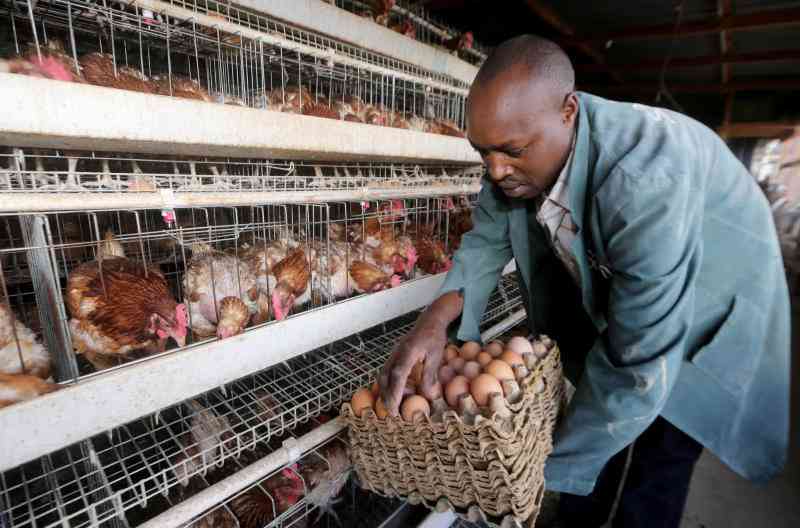Growth records
Most poultry farmers keep scanty information regarding growth and production of their flock. It is common to walk into a farm with 1,000 to 5,000 birds and not find well-kept records. We must as a priority develop a habit of keeping accurate flock records even in times of generally good performance.
The value of records will become noticeable when you have a problem like a drop in egg production, poor growth rates, high feed consumption yet poor conversion rates, low water intake, severe dehydration etc.
During my visit to farmers experiencing drop in egg production, my first question is normally how many grammes each bird consumes. Occasionally, I ask them how many many eggs they get per kilo of feed. How many litres of water the birds consume a day and their daily mortality for the past seven days. These records are extremely important and the sooner the norms are established, the better in understanding causes of any deviations from the expected.
It is embarrassing to find out that all along, your worker has been siphoning eggs from your store while you have been busy pumping multivitamins and egg boosters into your flocks because he knows you don’t keep records. A drop-in feed consumption or water intake, an increase in mortality, an increase in ambient temperature, increase in stocking density, high water PH, prolonged feeding time, rapid feed clearance, etc will come a long way in helping find out an early infection of a flock. So, the more data you keep, the better in understanding when a problem started and the most probable action forward.
Physical inspection
I always advise my farmers to visit their flocks at least twice per day and if possible during the feeding time and keenly watch the bird’s activities. This is by far the most important aspect of poultry farming and during an early disease outbreak, this is the time to describe any abnormality standing out. This is the time to record on your visit book feed clearance time, birds showing inappetence, lameness, un-usual gait, those showing nervous signs, type of stool etc.
Any vet visit should also coincide with feeding time, He/She will then pick individual birds and look for any abnormality on the head, muscles, keel bone, legs, cloaca, feathers, egg colour or deformity, any abnormal respiratory sounds and record. Most telephone farmers have a problem with this aspect of flock examination and are only informed when mortality is extremely high, and birds are dying in numbers when it could be too late to save the others.
Postmortem analysis
When mortalities hit the roof, for example when you are losing three birds for every 1,000 placed, you need to seek veterinary intervention, and a postmortem is highly recommended. All dead birds should ideally be examined by a qualified vet and a diagnosis done.
It may be necessary to sacrifice some weak birds for culling for examination to determine the underlying issues. Do not wait until too late and start narrating how this problem was noticed from day one of placement and yet we are on day 24. Report and seek for postmortem at the peak of the problem.
Problem analysis
With the history of the current flock and previous flocks, together with farm inspection and postmortem examination conducted, your vet will categorise the kind of problem on your farm. It could be respiratory, locomotive, egg production, Gastro-intestinal, skin or feathers related, etc.
This is where professionalism is highly needed to avoid unnecessary use of antibiotics with very little response. Diseases that are associated with respiratory distress are many and include but not limited to Newcastle, Flu, Aspergilus etc, locomotive disorders could be Ricketts, slipped tendons, Mareks etc, Gastro-intestinal could be associated with coccidiosis, worms, bacterial infections while egg production drops could be associated with IB infection, toxins, fowl typhoid etc.
Only a qualified vet will differentiate the most probable cause of flock infection following thorough examination aided with laboratory examination.
Plan of action
If the birds are found to be ok, there is no need to intervene, however, once a definitive diagnosis is made then the next action would be change of treatment, effect new treatment and recommend bio-security actions for the next crop.
In my years of practice, I get phone calls from farmers complaining of one aspect of a deviation from the norm, e.g. Daktari my birds are dropping brown feces, what antibiotic should I give? You need to tell me more otherwise you will be treating symptoms of a disease and not the actual problem.
Dr Watson Messo is the Head Vet at Kenchic.
For more info write to us on [email protected]
Want to get latest farming tips and videos?
Join Us
 The Standard Group Plc is a multi-media organization
with investments in media platforms spanning newspaper print operations,
television, radio broadcasting, digital and online services. The Standard Group
is recognized as a leading multi-media house in Kenya with a key influence in
matters of national and international interest.
The Standard Group Plc is a multi-media organization
with investments in media platforms spanning newspaper print operations,
television, radio broadcasting, digital and online services. The Standard Group
is recognized as a leading multi-media house in Kenya with a key influence in
matters of national and international interest.
 The Standard Group Plc is a multi-media organization
with investments in media platforms spanning newspaper print operations,
television, radio broadcasting, digital and online services. The Standard Group
is recognized as a leading multi-media house in Kenya with a key influence in
matters of national and international interest.
The Standard Group Plc is a multi-media organization
with investments in media platforms spanning newspaper print operations,
television, radio broadcasting, digital and online services. The Standard Group
is recognized as a leading multi-media house in Kenya with a key influence in
matters of national and international interest.







